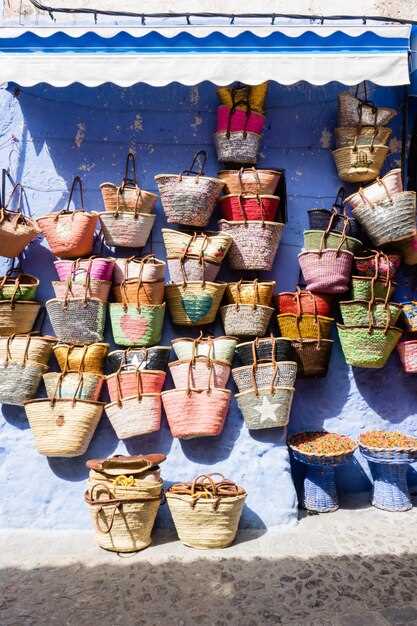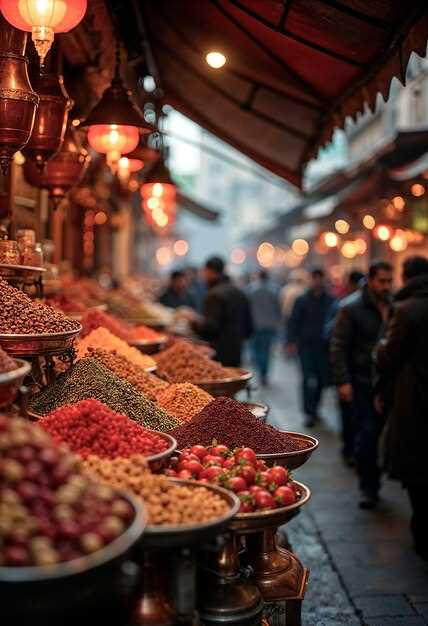
Book a private, convenient Souk El Had tour today to maximize your time in Agadir’s biggest market. Start in talborjt, then weave into the streets where stalls spill over with spices, leather, and ceramics. The route is provided by a local guide who is known for clear directions and keeps the pace comfortable, helping you avoid crowds at peak hours.
Inside the souk, you walk through winding streets of shops that feel like a maze. The locals greet you with mint tea, and you can sample spice blends, saffron, and honey at stalls run by private vendors. The views flash with color: blue pottery, red peppers, green figs. The sounds of bargaining create a lively soundtrack for your customer experience.
The tour provides practical details to keep things smooth: wifi access at select stalls, a clear route map, and a plan that keeps your group together. If you want a longer look, the guide can offer additional stops at talborjt-adjacent courtyards and spice markets. You’ll meet more locals, and you can request private time with particular shopkeepers to keep interactions respectful and productive.
The booking is straightforward: Libro a time that suits you. The provided itinerary includes a couple of special stops where the guide can offer tasting pauses at saffron, argan oil, and mint-tea corners. You’ll leave with tips from locals who value friendly exchanges, and you’ll walk away feeling absolutely confident about negotiating prices at talborjt shops.
Souk El Had: Guided Tour of Morocco’s Largest Market and Agadir’s Architectural Gems
Book a private, hassle-free 3-hour guided visit that pairs Souk El Had with Agadir’s architectural gems for truly convenient exploration. Choose flexible dates to fit your plans, and enjoy a streamlined route that minimizes lines and stress.
Souk El Had: highlights you won’t miss
- Vibrant stalls selling textiles, leather goods, copperware, spices, saffron, ceramics, and argan oil. The crowded aisles invite hands-on bargaining.
- Special features include decorative lanterns, tea sets, and traditional slippers; within the market corridors, merchants demonstrate mint-tea pouring and small crafts.
- Practical tips: go early to catch cooler weather, bring cash in dirhams, and start with a friendly offer; accept that prices vary by stall and negotiation style.
- Photo moment: a quick stop at a spice stall for vibrant hues and a camel statue or saddle as a keepsake shot.
Architectural gems you’ll see on the way
- Kasbah d’Oufella sits on a hill above the city, offering beautiful views over the Atlantic and the harbor, especially at sunset.
- The seaside promenade and whitewashed façades reflect a blend of Moorish lines and modern design, with blue accents and palm-lined avenues that frame the city from the coast.
- Design details along the route include arcades, decorative tiling, and cable railings that add a contemporary touch to traditional forms.
- Consider a short pause at a vantage point to take in the light over the coast and to compare old and new city layouts.
Optional add-ons for a fuller day
- Sandboarding on nearby dunes is a popular add-on for seekers of adrenaline; the experience is short and safe with gear provided and a quick drive from Agadir.
- A brief camel ride can be arranged near the outskirts after the market, offering a fun contrast to the hustle of the stalls.
Practical planning tips
- Best dates: spring and autumn when temperatures are mild and lines are shorter, but there are daily morning openings that suit different schedules.
- What to bring: a light backpack, bottled water, a hat, sunscreen, and small cash in local currency; wear comfortable shoes for long sessions on foot.
- Local etiquette: greet vendors with a smile, address prices in dirhams, and avoid pressuring sellers to go below reasonable offers.
Getting there: practical routes from central Agadir
Take an air-conditioned taxi from central Agadir to Souk El Had; it takes about 12-15 minutes and drops you at the market’s main entrance, just below the open arches where aromatic spices drift from the stalls.
If you’re budget-conscious, hop a grand taxi or a city bus. Grand taxis depart from the central station area and take roughly 15-25 minutes, often crowded, with stops near the market zone; city buses run frequently and cost less, though travel time can be longer depending on traffic.
A private drive suits every class of traveler and allows you to set a pickup time via whatsapp. The driver will take the fastest route from the airport or central Agadir to Souk El Had in about 20-25 minutes, depending on traffic.
Souk El Had is the largest and famous market in Agadir and a vivid source of color. When you arrive, head to the spices section, then the pottery stalls, followed by leather and textiles. The market opens early and stays open through the day, its open lanes buzzing with activity, sounds of bargaining, and participants moving between stalls.
Best times to visit: hours to avoid crowds and heat
Visit between 8:00–11:00 in the morning or 16:00–19:00 in the evening to dodge crowds and heat. These windows balance comfortable temperatures with lively stalls, giving you time for learning and photos without rushing.
In warmer months the midday sun can push temperatures up, making long walks less pleasant. Taking advantage of the early or late slots helps you feel relaxed, and you’ll notice more focused interactions with vendors. This felt smoother, more enjoyable, and truly rewarding for a first-time exploration of the marketplace.
- 08:00–11:00 morning block: traders set up, you spot fresh spices, fruits, and seafood before the crowds arrive.
- 16:00–19:00 evening block: light improves for photos, stalls restock with new items, and snack stops become inviting.
- Weekday advantage: Tuesday to Thursday mornings are generally calmer than weekends, helping you compare prices and options without pressure. Also, taking your time here can lower the price and improve interactions.
- Weekend caveat: Saturdays bring bigger crowds and more bargaining energy; if you prefer a calmer pace, aim for Monday or Wednesday mornings.
Booking and planning tips: an informative option is to reserve a guided tour or private guide who can map a route through the marketplace. A 2–3 hour window works well, leaving space for a snack break and a quick visit to nearby mosques or islands. The ticket or booking page often lists the cancellation policy, so you should check it in advance. If you want to indulge in desserts, look for stalls with cakes and pastries near the main square; many vendors offer sample bites that pair with Moroccan tea.
Practical route and habits: start near the main entrance, move clockwise, and pause at the spice counters before continuing to foods and sweets. If you spot stalls with cable displays, they are usually ancillary tools or crafts corners; continue through to the core marketplace. This organization helps you cover a broad range of items without backtracking and gives you a clear point to finish your loop.
Staying nearby: apartments or guesthouses in the market area offer quick booking options and can arrange a morning pickup point. A nearby host can share tips to beat crowds, making your experience feel truly amazing. This approach lets you take time to indulge in a snack and find a favorite vendor for future visits; the memory will be informative long after you leave.
Bargaining 101: tips, phrases, and etiquette
Begin with a warm greeting at Souk El Had marketplace in Agadir, name the item, and propose an initial price around 40-60% of the opening offer. This direct start sets the tone and signals you value the craft.
Keep dialogue light. Show you know the cultural value by asking about the item’s history, its hidden details, and its context in the citys marketplace. Stands form islands of color; near taghazout, vendors share space. Let the vendor present the items; then respond with a measured step up in price. Bundling two items or selecting a few pieces can lead to a fair bundle in Taghazout-adjacent stalls or inside the market’s aisles.
Etiquette tips: handle items gently, ask permission before touching, avoid insulting prices, and show appreciation for craftsmanship. If a stall isn’t within your budget, politely thank the seller and move to other stalls in the marketplace to compare options. Guides on cultural etiquette can help you navigate a busy day in Agadir and Taghazout settings without pressure.
| Phrase | Context | Response |
|---|---|---|
| Nice piece; price? | Initial approach | “We can go to 150 dirhams.” |
| Two items together? | Bundle offer | “350 dirhams for both.” |
| Pass for now | Decline politely | “Thank you; I’ll explore more stalls.” |
| Let me think | Pause to compare | “Take your time; I’ll come back with a firm number.” |
Must-see stalls: spices, leather, textiles, and crafts
Book guided tours with pick-up from your hotel and a smooth transportation link to Souk El Had; the ticket includes a focused route, practical tips, and booking in advance keeps you in control. It starts your day with local warmth and on-site recommendations, while your guide addresses concerns about bargaining and safety.
Spice stalls burst with saffron, Ras el Hanout, cumin, paprika, turmeric, and dried chiles. Look for specific jars with clear origin notes, ask to smell blends, and compare at more than one vendor. The unforgettable aromas help you decide what to take home; prices vary, based on weight and origin, and this point lets you gauge value. You cant miss a tiny sample of saffron or chili to kick off your tasting, then follow the hidden courtyards that lead to even more spice mixtures near the dunes.
Leather stalls present jackets, babouches, belts, and bags in calfskin, goatskin, and buffalo hides. Choose finishes from natural vegetable-tanned to glossy leathers; prices reflect weight and treatment. Based on quality, expect sharper prices for full-grain hides. Have your guide compare stitching and lining, and ask for a quick transfer to a workshop if you want to see tanning up close. You cant go wrong with a sturdy tote or a soft leather coin purse that ages gracefully, especially when paired with a simple outfit. Other stalls nearby offer leather accessories that complement your main pick.
Textiles and crafts weave together in kilims, carpets, fouta towels, scarves, embroidered fabrics, copperware, brass lanterns, pottery, and carved wood. Many visitors enjoyed the craftsmanship and traditions behind the patterns. Inspect weave density and dye consistency, and ask to see a finished edge before you buy. Hidden courtyards connect textile lanes to craft stalls, creating an extended loop that invites you to compare items side by side. For a special memento, choose a handwoven rug fragment or a hand-painted ceramic piece; many families maintain traditions that reflect Morocco’s artistry, making your purchase truly meaningful. If you want more options, ask your guide to show you a few additional stalls–booking a little longer visit can be very rewarding, and you’ll enjoy a deeper look at the artisan process.
Architectural gems nearby: landmarks and photo spots

Begin at Souk El Had, where arcaded lanes shelter carved doors, lattice screens, and tilework that catches the morning light. A short climb to the Kasbah overlook delivers a clear view of Agadir’s skyline meeting the Atlantic, with whitewashed walls, minarets, and palm silhouettes providing standout framing for architectural details.
Walk toward the harbor along the marketplace route to capture contrasts: contemporary boats against traditional facades, blue shutters against sunlit plaster, and arches guiding the eye through lively courtyards. In late afternoon, shoot from inland alleys where spices and couscous stalls lend warm textures, then switch to the promenade for wide-angle shots that include the sea and the souk’s animated life.
For a coastal extension, a quick drive to agadirtaghazout adds seaside textures and sunset colors to your portfolio. If time allows, you can pair a few shots of olive trees near the port with a stroll along the boardwalk for a balanced set.
